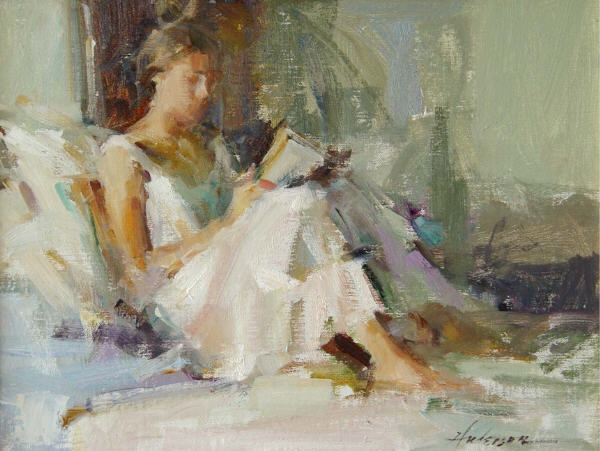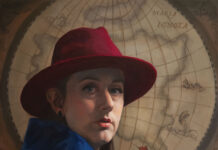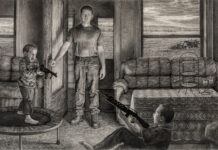Carolyn Anderson has been on the faculty of the Figurative Art Convention & Expo. (Join us for the next amazing event focusing on still life, figurative art, and more > Realism Live: A Global Virtual Art Conference.)
Do Your Paintings Look Stiff?
BY CAROLYN ANDERSON
www.carolynanderson.com
Edges are not arbitrary. They define our three-dimensional reality and are the transitions between value, shape, and color. In painting edges help to define or diminish form and are necessary in creating the illusion of three dimensions.
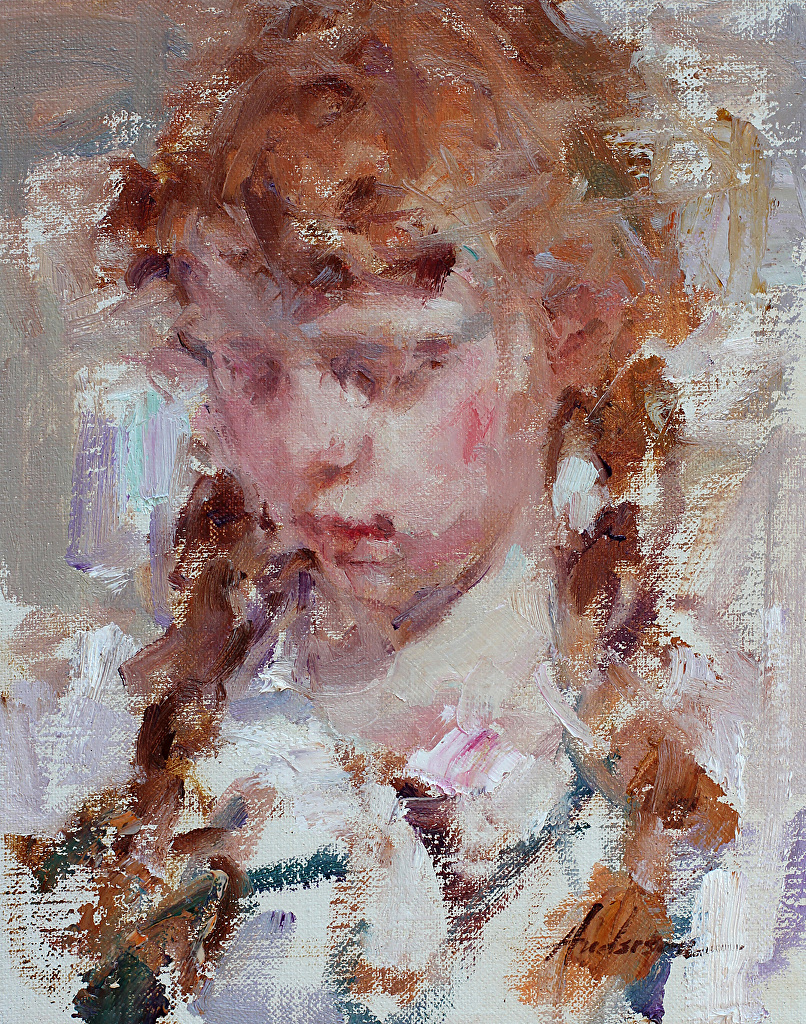
The reason so many artists have problems with edges is simply because edge detection is a major component of visual processing. Detecting figure-ground separation and object separation is a very necessary part of how we see. We need to know where things are. We need to know where we are and where other people are. We need to know where the coffee mug is, or better yet, where the stem of the wine glass is located. We think we see edges and contours more distinctly than they actually are. And that works very well for us most of the time . . . except, of course, when we are painting.
If your paintings look stiff, if your figures don’t turn, and objects appear flat and look like paper cut-outs, then perhaps you need to reevaluate how you see, not just how you apply paint.
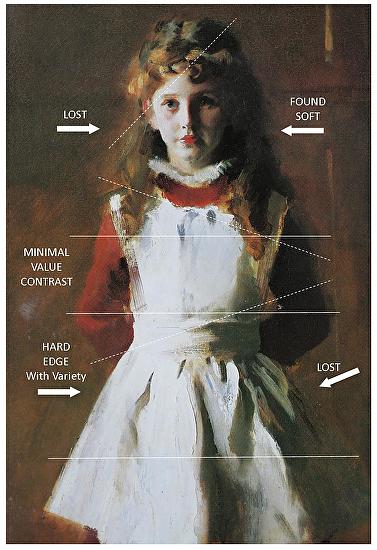
First of all, do not assume there is an edge. Is there an edge, and if so, what kind of edge? What defines the form? Is it a change in value or color or is it a change in shape? Many times it is a change in information next to the form. A strong light next to a strong dark will usually result in a harder edge. Information turning into shadow will obviously not be as noticeable and will usually have a softer edge or perhaps no edge at all.
Look for the doorways that allow one shape to turn into or become part of another shape. Pay attention to the edges opposite one another on an object and compare. They should have variety and suggest dimension. Using the same type of information on both sides of an object or figure, especially on the horizontal plane, will flatten the shape and negate any attempts at modeling and value changes within the object itself.
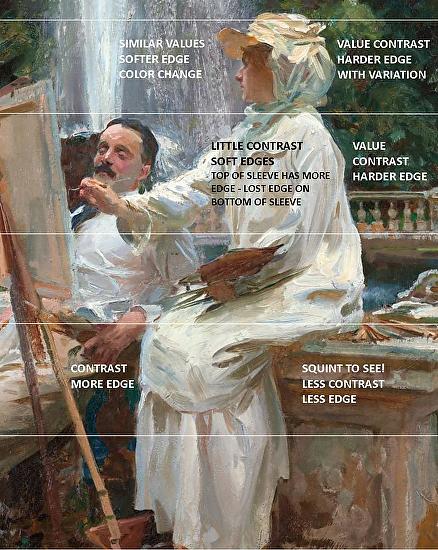
These diagrammed paintings by John Singer Sargent illustrate the variety and complexity of edge information. Sargent, Anders Zorn, and Joaquin Sorolla were all extremely adept at using painterly, fluid brushwork to suggest dimension and movement while still delineating solid form. Remember that squinting helps us to simplify information and to see value changes more easily.
According to Buddhist teaching the world we see with our eyes in just a reflection of a reality that we cannot quite grasp. The power of painting is the suggestion that this thing that is a reflection of truth can also, somehow, be truth.
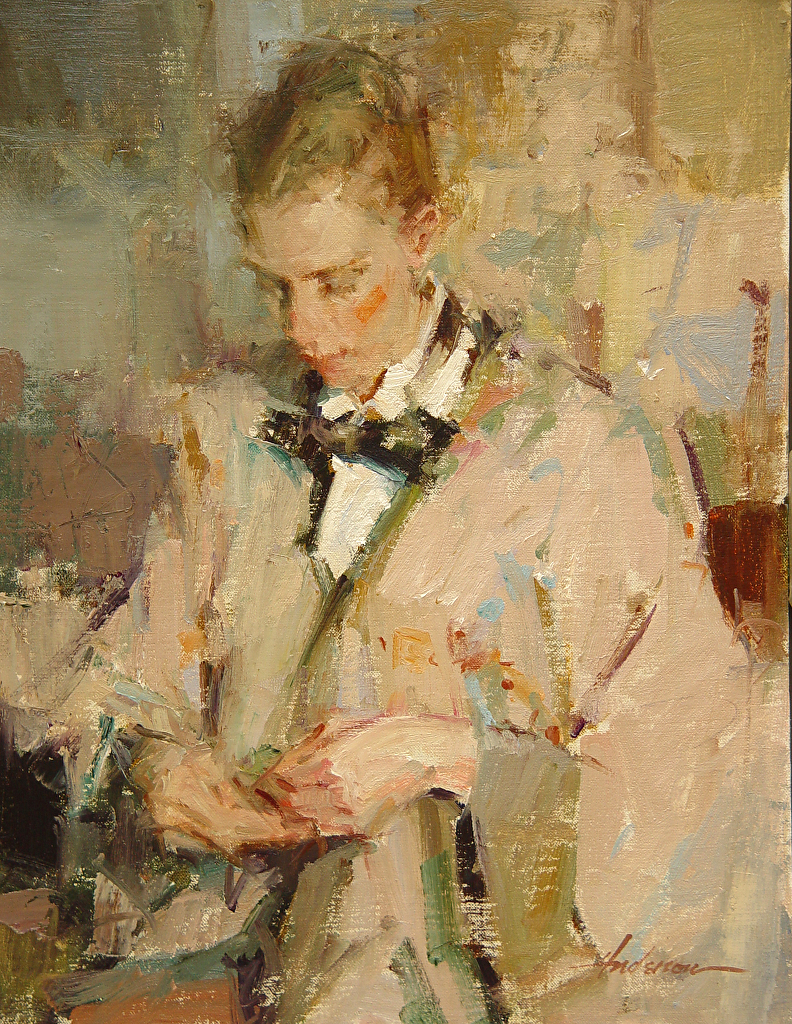
The above article is shared with permission. Please visit https://www.carolynanderson.com/blog to read more from Carolyn Anderson.
Visit EricRhoads.com (Publisher of Realism Today) to learn about opportunities for artists and art collectors, including: Art Retreats – International Art Trips – Art Conventions – Figurative Art Workshops (in person and online, including Realism Live) – And More!


